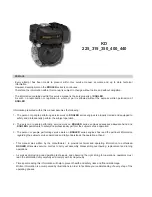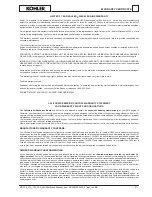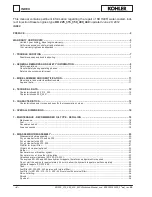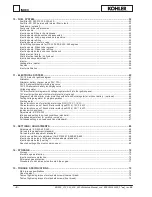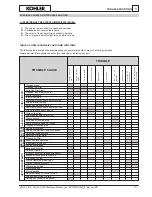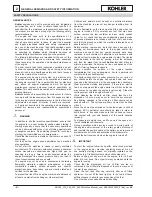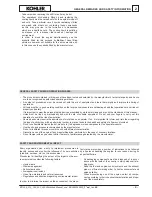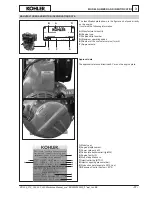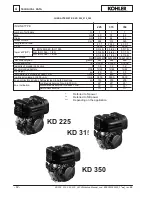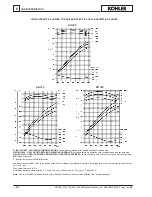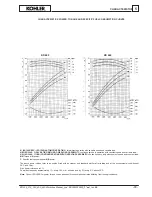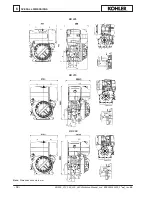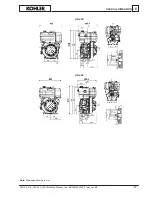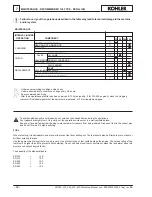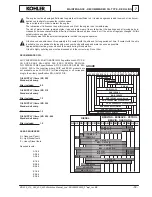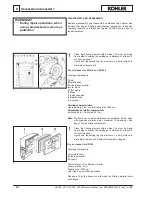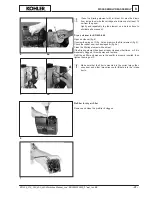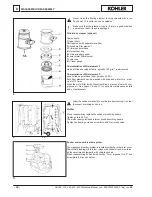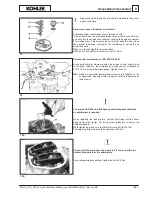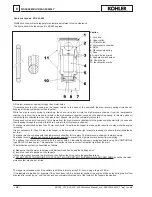
2
- 9 -
GENERAL SAFETY DURING OPERATING PHASES
– The procedures contained in this manual have been tested and selected by the manufacturer’s technical experts, and hence
are to be recognised as authorised operating methods.
– A number of procedures must be carried out with the aid of equipment and tools that simplify and improve the timing of
operations.
– All tools must be in good working condition so that engine components are not damaged and that operations are carried out
properly and safely.
It is important to wear the personal safety devices prescribed by work safety laws and also by the standards of this manual.
– Holes must be lined up methodically and with the aid of suitable equipment. Do not use your fingers to carry out this
operation to avoid the risk of amputation.
– Some phases may require the assistance of more than one operator. If so, it is important to inform and train them regarding
the type of activity they will be performing in order to prevent risks to the health and safety of all persons involved.
– Do not use flammable liquids (petrol, diesel, etc.) to degrease or wash components. Use special products.
– Use the oils and greases recommended by the manufacturer.
Do not mix different brands or combine oils with different characteristics.
– Discontinue use of the engine if any irregularities arise, particularly in the case of unusual vibrations.
– Do not tamper with any devices to alter the level of performance guaranteed by the manufacturer.
SAFETY AND ENVIRONMENTAL IMPACT
Every organisation has a duty to implement procedures to
identify, assess and monitor the influence of its own activities
(products, services, etc.) on the environment.
Procedures for identifying the extent of the impact on the envi-
ronment must consider the following factors:
-
Liquid waste
-
Waste management
-
Soil contamination
-
Atmospheric emissions
-
Use of raw materials and natural resources
-
Regulations and directives regarding environmental impact
In order to minimise the impact on the environment, the manu-
facturer now provides a number of indications to be followed
by all persons handling the engine, for any reason, during its
expected lifetime.
-
All packaging components must be disposed of in accor-
dance with the laws of the country in which disposal is ta-
king place.
-
Keep the fuel and engine control systems and the exhaust
pipes in efficient working order to limit environmental and
noise pollution.
-
When discontinuing use of the engine, select all compo-
nents according to their chemical characteristics and dispo-
se of them separately.
GENERAL REMARKS AND SAFETY INFORMATION
KD 225_315_350_400_440 Workshop Manual_cod. ED0053029330_
1° ed
_ rev.
00
. Take care when removing the oil filter as it may be hot.
. The operations of checking, filling up and replacing the
cooling liquid must be carried out with the engine turned off
and cold. Take particular care if liquids containing nitrites
are mixed with others not containing these compounds
as this may give rise to the formation of nitrosamines
which are a health hazard. The cooling liquid is polluting,
so dispose of in a manner that does not damage the
environment.
. In order to move the engine simultaneously use the
eyebolts fitted for this purpose by
Kohler
. These lifting
points are however not suitable for the entire machine, so
in this case use the eyebolts fitted by the manufacturer.


